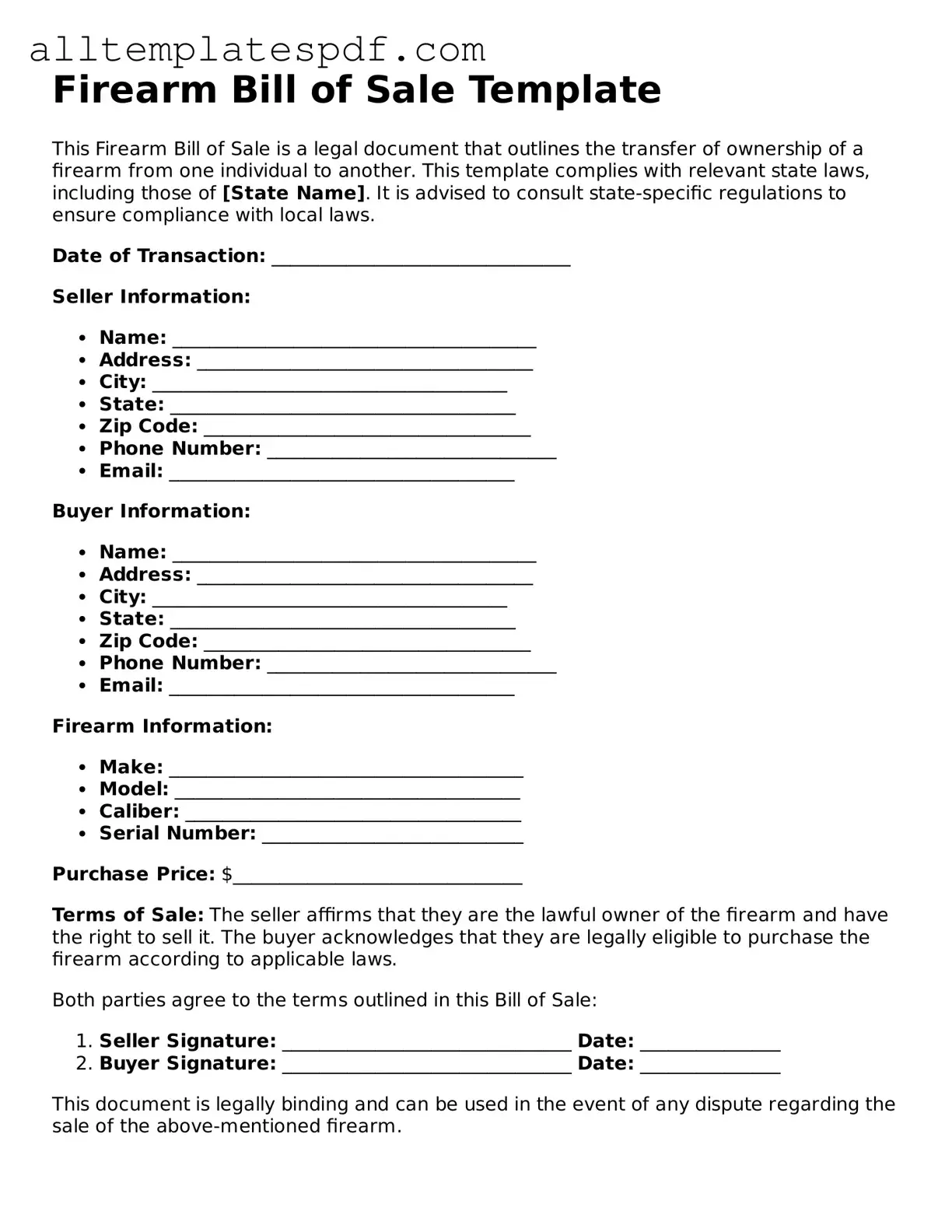Filling out a Firearm Bill of Sale form can seem straightforward, but many individuals make common mistakes that can lead to complications down the line. One prevalent error is failing to include all necessary information. Buyers and sellers must provide their full names, addresses, and identification details. Omitting even a single piece of information can render the document incomplete and potentially void.
Another frequent mistake is neglecting to date the form properly. The date of the transaction is crucial for record-keeping and legal purposes. If the form lacks a date, it may create confusion about when the transfer took place, which could complicate matters in case of future disputes.
Many individuals also overlook the importance of signatures. Both the buyer and seller must sign the form to validate the transaction. Without these signatures, the document may not hold up in court or during any legal scrutiny. It is essential to ensure that both parties are present and willing to sign at the time of the sale.
Inaccurate descriptions of the firearm can also pose significant issues. The form should clearly outline the make, model, caliber, and serial number of the firearm being sold. Failing to provide precise details can lead to misunderstandings and may even result in legal challenges if the firearm is misidentified.
Another mistake is not keeping a copy of the completed Bill of Sale. After filling out the form, both parties should retain a copy for their records. This document serves as proof of the transaction and can be invaluable if questions arise later regarding ownership or legality.
People often forget to verify the legal eligibility of the buyer. Sellers should ensure that the buyer is legally allowed to purchase a firearm. This includes checking for any restrictions based on age, criminal history, or other legal disqualifications. Failing to do this can result in serious legal repercussions for both parties.
Finally, a lack of awareness about state-specific laws can lead to mistakes. Firearm laws vary significantly from one state to another. It is crucial to understand the specific requirements and regulations in your state to ensure compliance. Ignoring these laws can lead to fines or other legal consequences.
